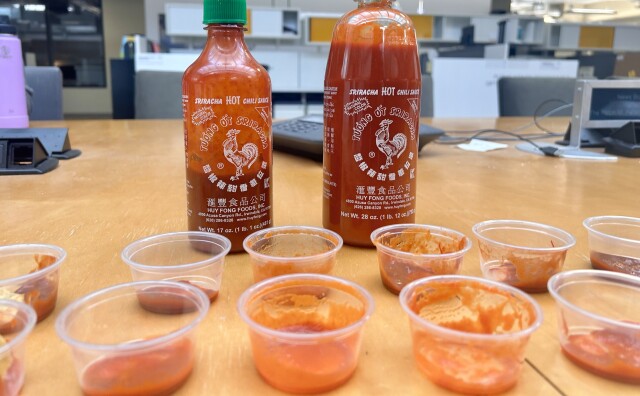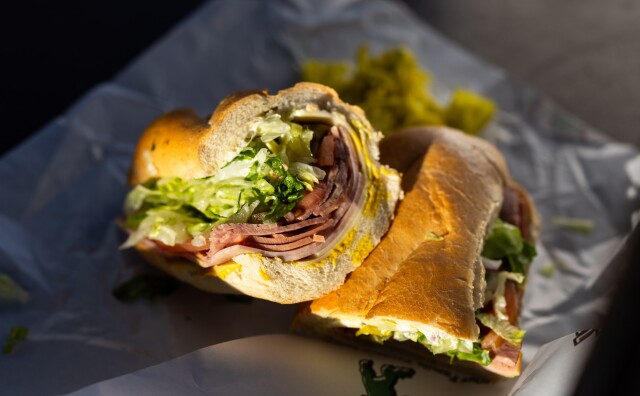Everything We Know About The Formosa Cafe's Origin Is Probably Wrong

After learning that the 1933 Group plans to restore Tail o' the Pup and revive it as a working hot dog stand, we decided to check in with the company on its other major project, restoring the Formosa Cafe. You remember the shuttered West Hollywood restaurant anchored by an old trolley car, right? It was a popular Los Angeles hangout for nearly a century before it got a makeover that pretty much everyone hated and closed in 2016. Cue the lamenting.
Six months later, in June 2017, the 1933 Group announced it had signed a 10-year-lease for the space and would start a painstaking, $1 million restoration. Cue the cheering. At the time, the company said the Formosa Cafe would reopen sometime "next year" i.e. in 2018.
How likely is that? TL;DR: It's gonna be a while but in the process of restoring the Formosa Cafe the owners have learned a ton about its history.

The Nitty Gritty
1933 Group partner Bobby Green is overseeing the Formosa's renovation. Aside from the usual permitting and inspection hassles, he says his biggest problem is finding parts for a 117-year-old trolley car. It turns out, the Formosa Cafe owns the last surviving 800 series train car in the world.
Green says the trolley car was probably plucked from a salvage yard and placed at the corner of Santa Monica Blvd. and Formosa Ave. in 1940. It is the original model used on the Red Line, which started running these kind of cars around 1904. "At that time, they were open-sided, so it was more like a hop-on, hop-off trolley," Green says. This particular car dates to 1901, so it was already vintage when it became part of the Formosa Cafe.
"We're not only restoring the restaurant and bar, we're restoring the train car and making it way more visible as a train car than it ever was before," Green says. "That's as exciting for me as restoring the Formosa itself."

As part of the overhaul, the 1933 Group dove into the history of the Formosa, leading to a sad discovery. The only other 800 series train car they could find belonged to the Orange Empire Railway Museum. "I called them because I wanted to go take pictures or find out if they'd sell any hardware off of it," Green says. "And sadly, they told me that last year, the thing burned to the ground."
So where does he find parts for a train car that no longer exists? He doesn't. He has them made. Green is getting various parts — including brass handles and the destination box that was on the roof of every train — rebuilt from pictures. "To me, that's just second nature," says Green, who restores cars, motorcycles and boats from the 1920s and '30s.

The Backstory
As part of the renovation, the 1933 Group brought in Max Shapovalov to write a book about the history of the Formosa Cafe. He describes it as "an intensive historical investigation" and says he has been digging into the archives of libraries, city officials, Pacific Electric, the FBI and family members.
The semi-official history of the Formosa Cafe, if you go by Wikipedia (and everyone who has cribbed from it), is that "the Formosa was founded in 1925 by 1920s prize-fighter Jimmy Bernstein," who "operated his establishment initially in a Red Car trolley."
Shapovalov offers a different and more detailed account. It's based on the memoir of Lindy Brewerton, a bartender who worked at the Formosa for 48 years. He says that although the Formosa is believed to have been a diner as early as 1915, when the Jesse Hampton Studio was built, the earliest documented reference to a restaurant at that site is a tiny eatery called the Red Post Cafe. It opened some time in the 1920s and was owned by Joe Levey, the proprietor of a local steakhouse chain.

"It sat on the corner of Formosa and Santa Monica for a number of years, serving breakfast and lunch in its cramped space," Shapovalov says via email. "It served working class people and tenants of the rapidly growing residential area to the north of Santa Monica Blvd."

The Red Post Cafe remained in operation until the end of the 1930s when the land, once owned by Standard Oil of California, was bought by a new owner. According to Shapovalov, Maximilian Goldstein, a nightclub entrepreneur known as Max Goldie, rebuilt the place in 1939 to make way for a "Restaurant and Cocktail Lounge with a Dining Car." When Goldie expanded the space, he attached a Pacific Electric Red Car to the venue, debuting it as "The Formosa Night Club."

Shapovalov says that by one account, Goldie lost the cafe in a poker match to the brother of prize-winning lightweight fighter Jimmy Bernstein. After getting injured, Bernstein had moved from New York to Los Angeles, where he became friends with actors Charlie Chaplin and Douglas Fairbanks.

In another account, the venue had three owners -- Goldie, Bobby Goodman and Stan Marcus -- when it debuted as the Formosa. In 1945, Goldie was found shot in the back in a phone booth on Santa Monica Blvd. and Jimmy Bernstein, a bookie who has been confused with the boxer of the same name, bought in to the business in 1947. A few years later, Bernstein brought in Lem Quon as a chef and Quon eventually became his business partner.
From Brewerton's memoir, "Forty Years Behind Bars":
"We had the three owners when I started at the Formosa. The one of them, Goldie, was nervous as a whore in church, would walk all night from one end of the bar to the other, which was a long ways. Later on, after he had sold his interest in the bar, they found him in a telephone booth on Santa Monica Blvd. with a bullet hole in his back. Soon after that, Jimmy Bernstein bought into the Formosa. He was a bookmaker. He used to come in all the time and I would wait on him. He was never as free with the "buck" as the other bookmakers. Lem started at the Formosa in 1948 or 1949. He said he was there a lot earlier but he wasn't."
These are glimpses of a much larger story, Shapovalov says, that will be detailed in his book. Who knows what he — and other researchers — might uncover as they keep digging?
Whatever the origins of the Formosa Cafe, it became popular with actors like Clark Gable, Ava Gardner, Humphrey Bogart and Frank Sinatra, to name just a few. Later, it would become a haunt for rockers. Hundreds of black and white headshots would eventually decorate its walls.

Over the years, the Formosa Cafe retained a degree of coolness and distressed glamour even as L.A.'s couture cocktail boom brought more upscale watering holes to the city. But it also struggled to survive. At one point, it was almost torn down and turned into a parking lot.

Shapovalov says the Beastie Boys were big fans of the Formosa and had a line, "God, the Formosa," in one of their songs. He's still sorting out the details.
Irish rocker Bono is also a fan. He was supposedly sitting at a pub in Ireland when he heard the Formosa was going to be shut down and wrote a poem on the back of a beer coaster. Shapovalov shared a few lines:
It's dark in the daylight, you can't see very far
Past the ghosts of Sam Goldwyn in the old train car.
Want more tidbits and historical details about the venue? You'll have to wait for the book. It's slated to come out around the same time the Formosa Cafe reopens, which Bobby Green hopes will be in February or March of 2019. Fingers crossed.

-
“It was a downer,” said Agustin Ruelas, the co-owner at Brewjeria, the Latino and POC-owned craft brewery in Pico Rivera. “We just wanted to honor Selena.”
-
After people began complaining online that Sriracha they'd bought recently didn't taste like the old stuff, we set out to find the answer. It didn't go well.
-
From tortas to tuna melts, all sandwiches tell a unique story as they celebrate Los Angeles' diverse tapestry of flavors with each bite.
-
The company behind Sriracha told us production has resumed.
-
Dustin Bartz has figured out a way to sell a $6 smashburger — and still make a tidy profit. He enjoys trolling competitors who charge more.
-
Two amateur bakers take on a beloved, almost sacrosanct school treasure.








